 I love plants which self seed. It’s like inviting Mrs Serendipity to your garden. Self-seeding is not for those who like a tidy garden, but I like a little anarchy and serendipity does me many horticultural favours.
I love plants which self seed. It’s like inviting Mrs Serendipity to your garden. Self-seeding is not for those who like a tidy garden, but I like a little anarchy and serendipity does me many horticultural favours.
Nearly three decades ago Chris and I moved into our first home together, a one bedroom garden flat in south-west London, and my father-in-law gave me some hollyhock seed fresh from his garden. I tried sowing some in pots and threw the rest of it around the garden. Much the best plants resulted from the seed thrown directly into the poor but sunny flowerbed of our tiny garden and we have had hollyhocks ever since. Alcea rosea, to give them their scientific name, also make me think of my own father, who used to call all flowers “Hollyhocks”, as he called all my male friends, even the one I married, “Arthur”.
Nowadays the hollyhocks grow mainly in our dry, sunny front garden, which lies in the rain shadow of the Cotswold Hills. They are descended from the original ones, although thanks to the bees we occasionally get yellow fig-leafed hollyhocks or sultry mahogany among the ordinary pinks and reds. I hate net curtains and like to have silky hollyhock frocks for privacy instead. It’s just splendid to have such spectacular, tall, colourful plants for no effort or expense. Mrs Serendipity has ensured that they look wonderful in front of Cotswold stone and with the roses and hydrangeas which we inherited from the previous owners.
Bumblebees roll about in the megaphone flowers, snails thin the young plants out for us but never eradicate them completely. I have a feeling the snails also play a part in spreading the spores of the rust which always infects them. Hollyhock rust makes the older leaves messy but if they look really bad I just cut them off – which also lets a bit of light in to the plants beneath. It doesn’t seem to affect the flowering. This year’s crop has just peaked and the last flowers are now shouting from the tops of the stems as the seed buttons below them ripen.
 Hollyhocks look a bit messy after flowering but they soon ripen enough seed to allow me to cut them down. On a dry day in late summer I will cut the long stems (loppers are needed) and whip the walls of our house with them in a sort of Beating the Bounds ceremony; seeds burst all over the place and I curse myself for forgetting to wear a high-necked top to keep the itchy seeds and bracts out, not to mention dislodged weevils, earwigs and spiders. The rust-ridden skeletons then go in the green bin.
Hollyhocks look a bit messy after flowering but they soon ripen enough seed to allow me to cut them down. On a dry day in late summer I will cut the long stems (loppers are needed) and whip the walls of our house with them in a sort of Beating the Bounds ceremony; seeds burst all over the place and I curse myself for forgetting to wear a high-necked top to keep the itchy seeds and bracts out, not to mention dislodged weevils, earwigs and spiders. The rust-ridden skeletons then go in the green bin.
I enjoy the way they pop up around our front door in a wide range of heights and colours and thrive disobediently at the front of borders. I don’t bother to transplant the young plants, as with most biennial garden plants you can do so in the autumn but the best hollyhocks will have chosen their position, which is usually as hot and sunny as possible, and will have sent their roots far down very quickly. This year’s many-branched champion at about eight feet (sometimes they get to about 11 feet) is growing in the crack between our little garden wall and the tarmac pavement. Sometimes I tie the plants back if they threaten to block the path or the door but in the flowerbeds I let them lean and sag if they want to, it’s rare for them to collapse completely. Inconvenient branches are cut for the house.
Hollyhock spotting is an annual sport for me. They spread themselves down village streets – you can see the seed strain propagating itself in a neighbourhood – there’s a particularly good colony which wanders along the main street of Woodstock in Oxfordshire. Every summer I promise myself that one of these days I’ll stop the car and take photographs of it. I might even snaffle some seed.
Now my parents-in-law have moved to a nursing home, their active gardening days are over but I was glad to see that the stone plant pot we saved from their garden has a few hollyhock seedlings sprouting in it. When the band of rain currently battering my window has soaked nicely into the flower beds I shall transplant them carefully into the garden so that they can join their cousins.

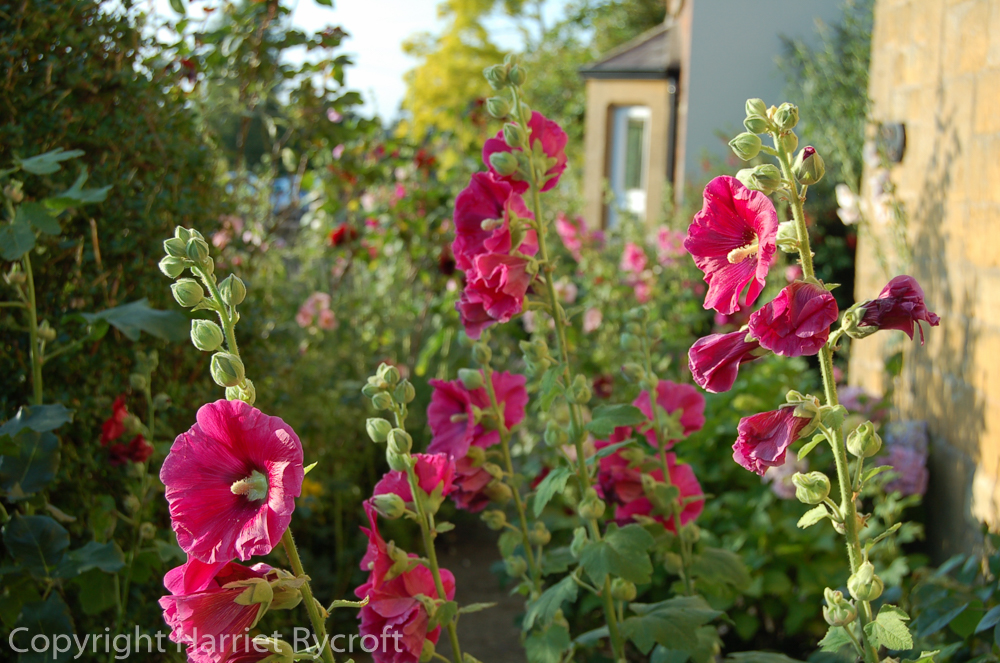
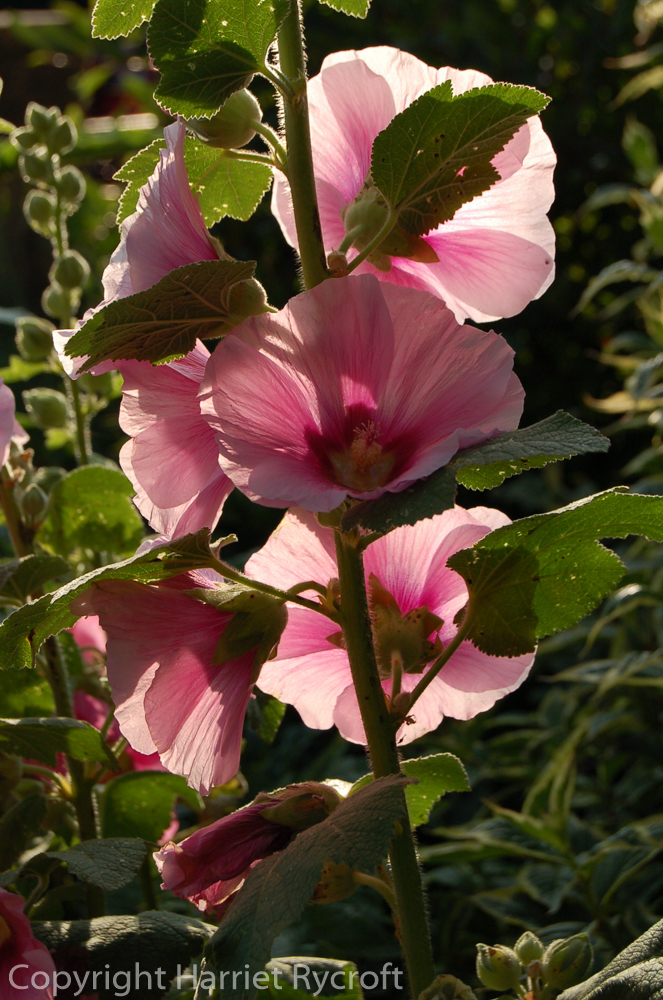
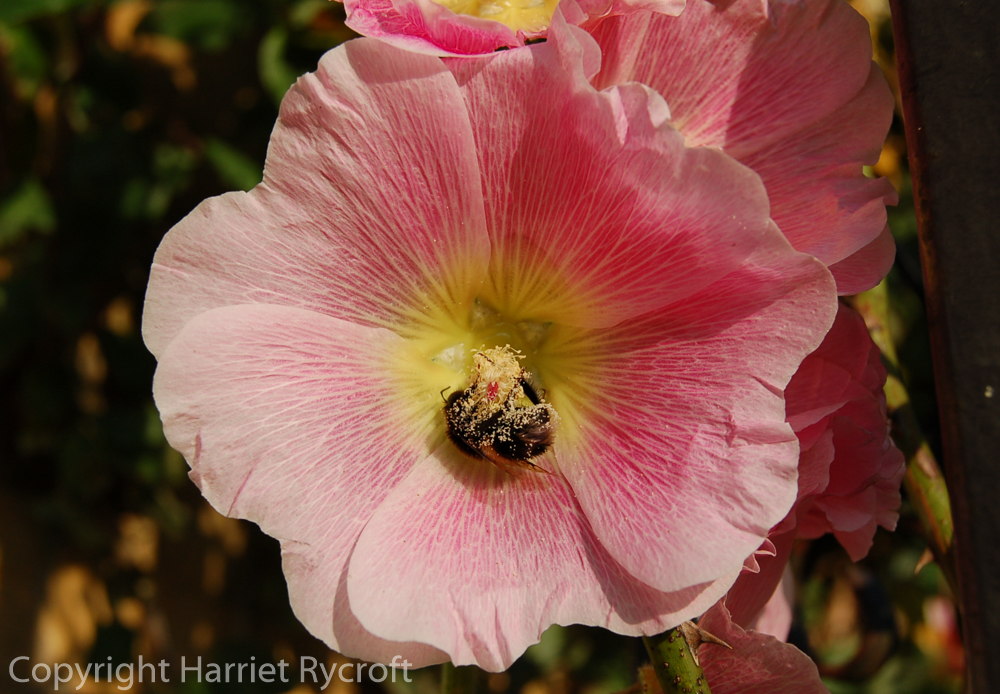

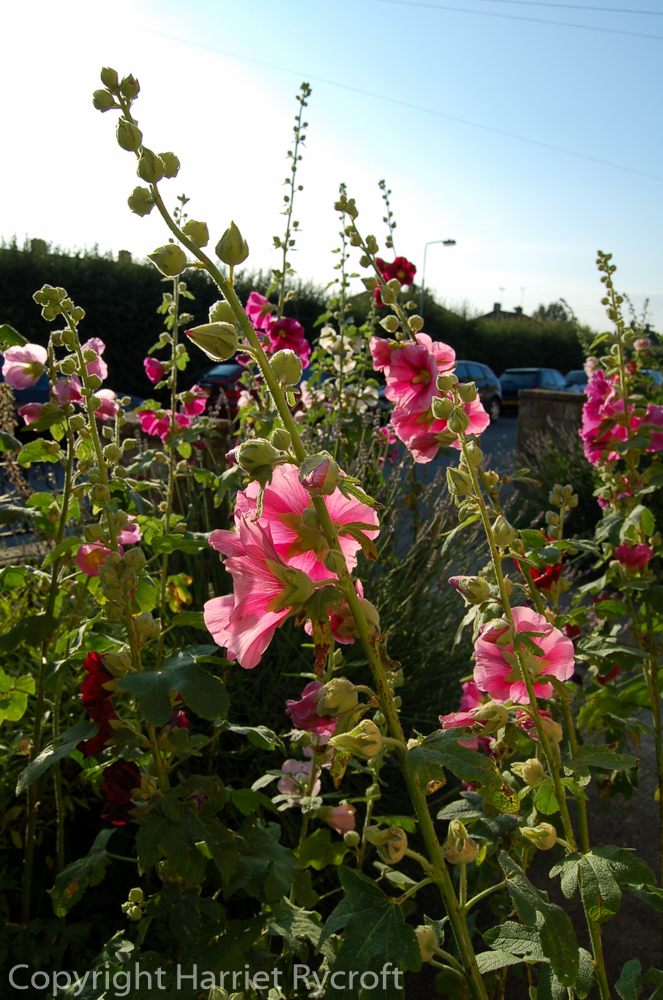

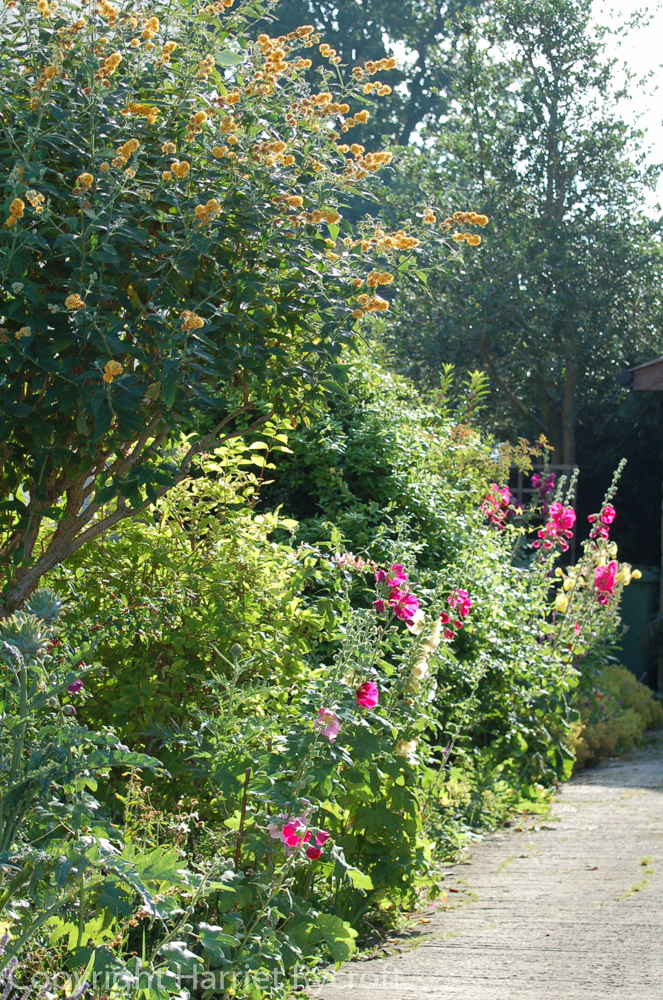
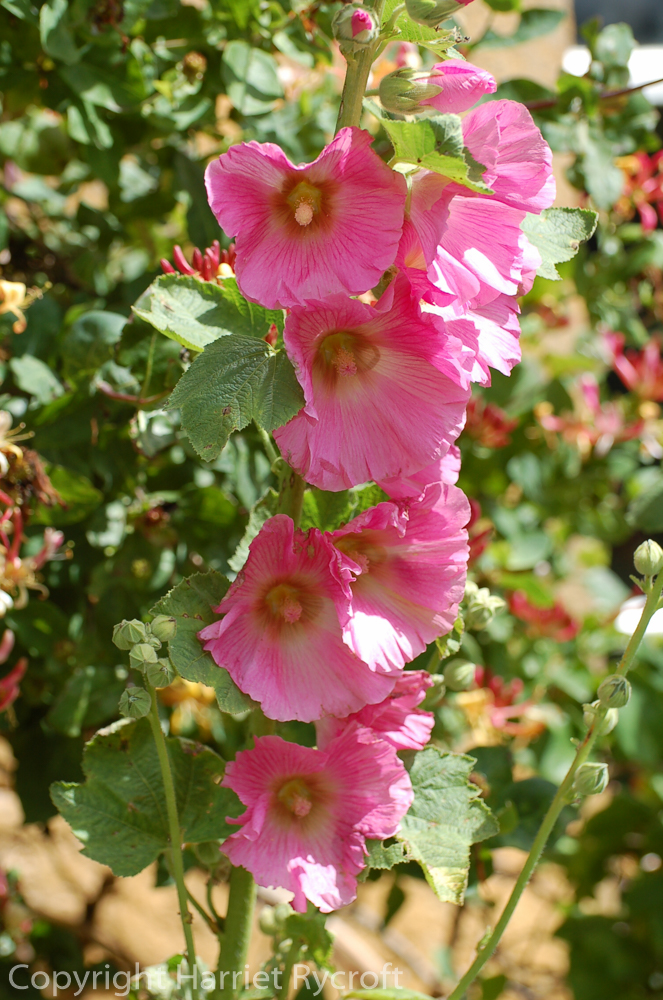

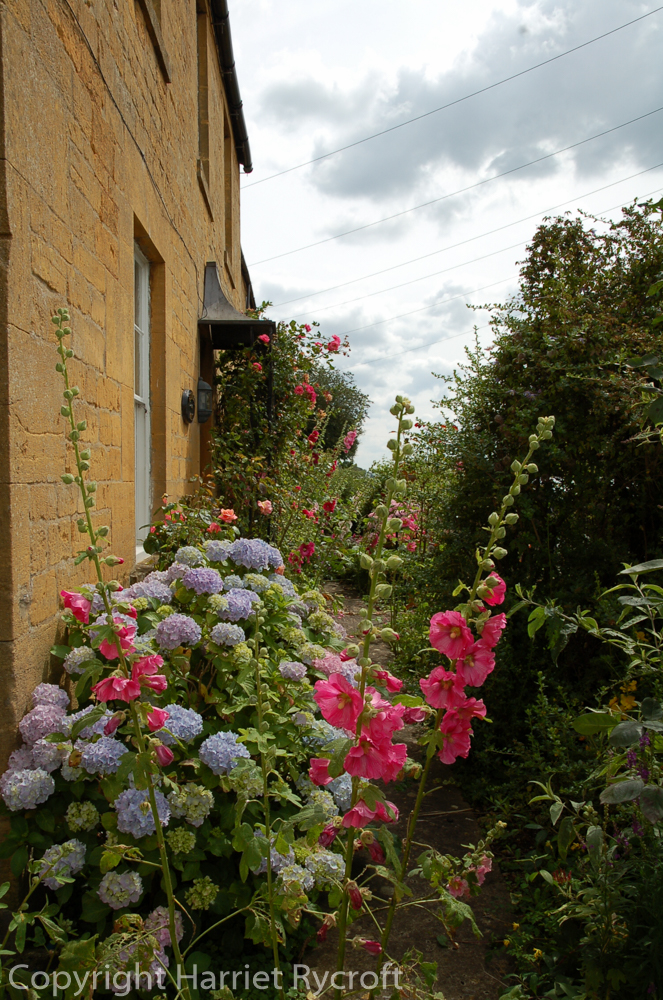
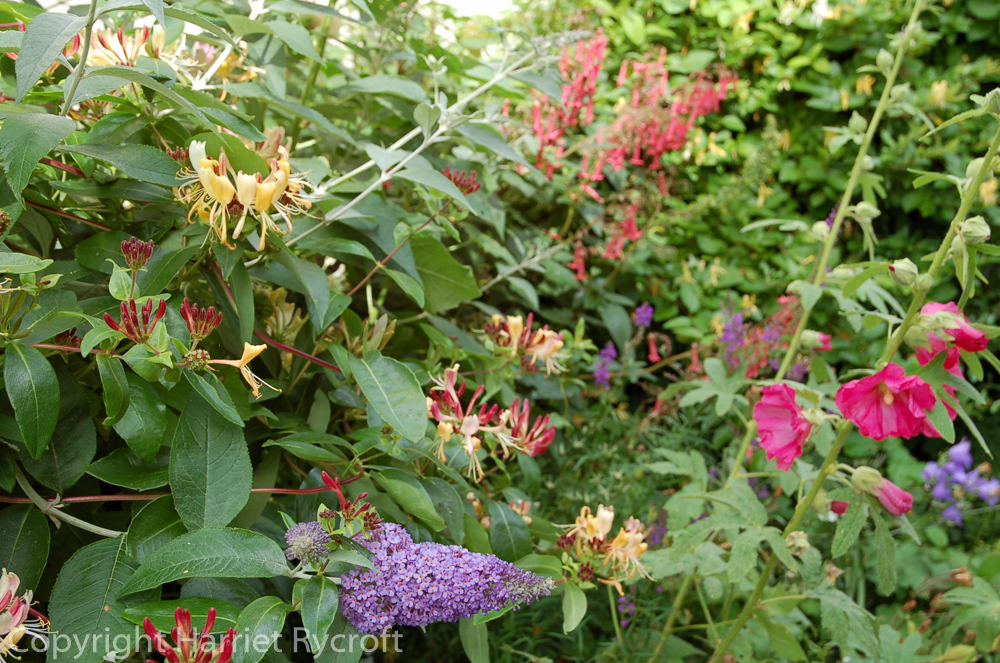



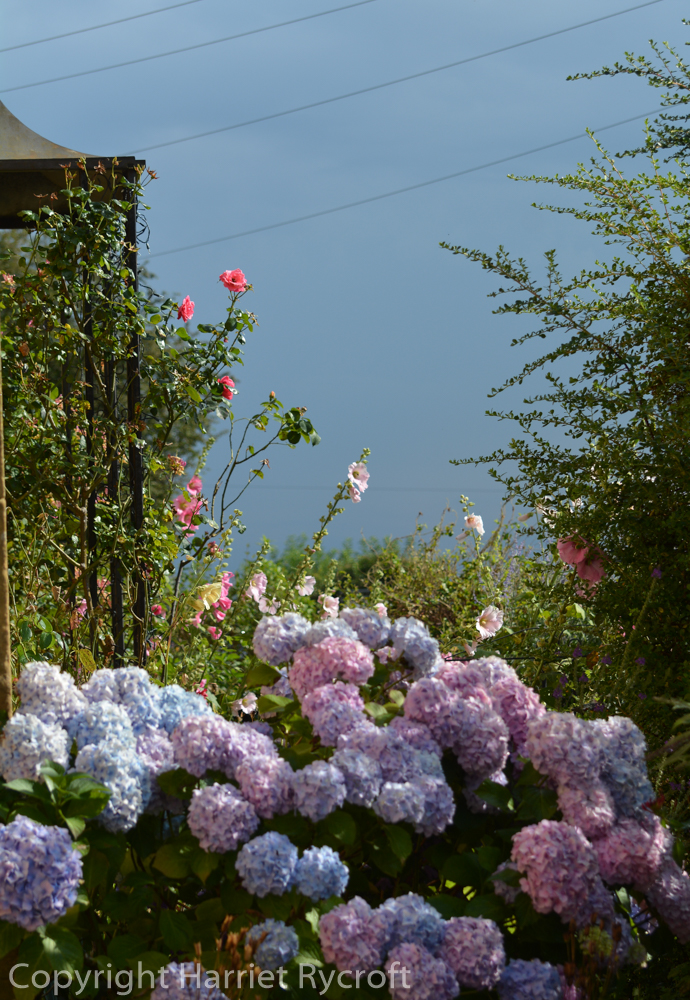
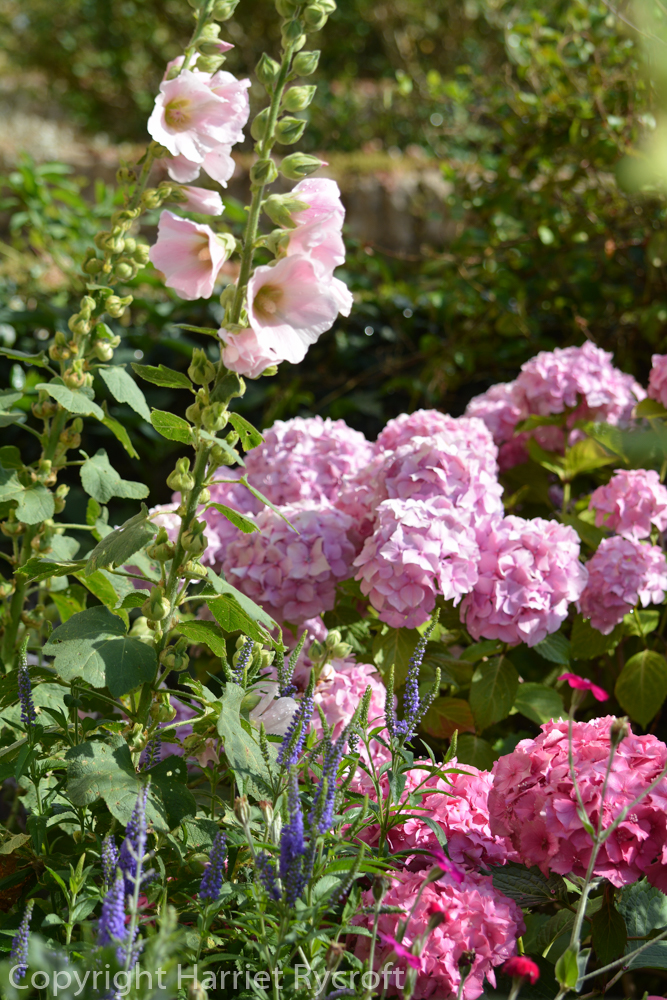

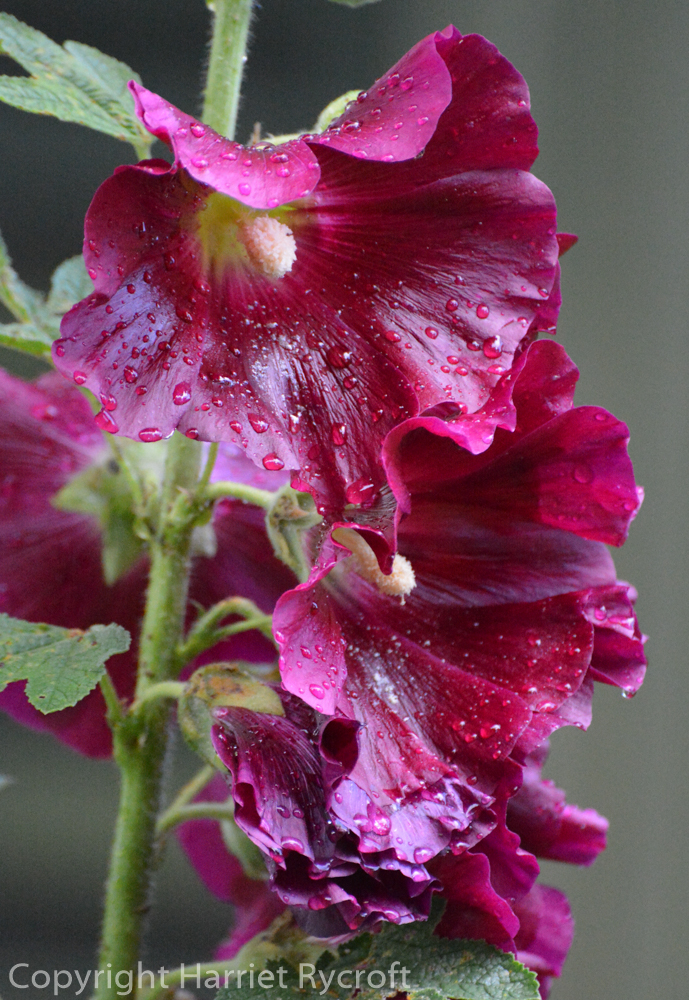





We so love hollyhocks but after 29 years of improving our London soil with compost we find we can’t get them to grow here! Our soil is far too rich for them. What can I do? We see them growing out of cracks in paving stones everywhere but can’t get them to grow although I see our garden as a cottage garden. I will keep trying though. Yours are truly fabulous!
LikeLike
Thanks – they vary from year to year quite a bit. How about putting a patch of gravel down in a sunny spot – even as a mulch on part of a flower bed – and scattering seed into that? The gravel will reflect light and give the seedlings the sharp drainage they like for a good start (and will discourage snails). I reckon once they are established they won’t care if the soil is rich or poor, what they want is lots of light and not to be too damp.
LikeLike
I love hollyhocks. Was surprised to see them growing well in Spain. Self seeded ones were the best! So I am going to try and grow some myself in our new garden. Thanks for the blog. Great as ever.
LikeLike
Thank you very much, Andrew! They are definitely worth a try, give them the sunniest spot you can…
LikeLike
They use to seed every where in my mothers garden. I have had some lovely black ones for several years, last year I collected seed from several different coloured plants, one has flowered a beautiful dark burgundy, this year, which I posted a picture of on my blog ‘ the dark side’.
LikeLike
I love the dark ones – but isn’t it great how the pack is shuffled each year! You never know what you’re going to get…
LikeLike
I’ve always had hollyhocks. Wonderful plants and placing bets on what will come up each year is an annual habit now. But this year, a very bad attack of rust set in on some kept plants and quickly spread to the youngsters. And I thought I was being fastidious in cutting right down to ground and clearing up. I’ve dug them all up now but will restart from saved seed. I also have lots of malva growing here but none of those plants have been affected at all. Must check to see if they’re “invisible carriers”.
LikeLike
That’s bad luck John. For me it has only been a problem in very wet years, and, as you say, plants trying to do a second year are usually worst affected. I think improving airflow in the area might help – I find mine don’t do so well where shrubs have grown bigger and crowded the space.
LikeLiked by 1 person